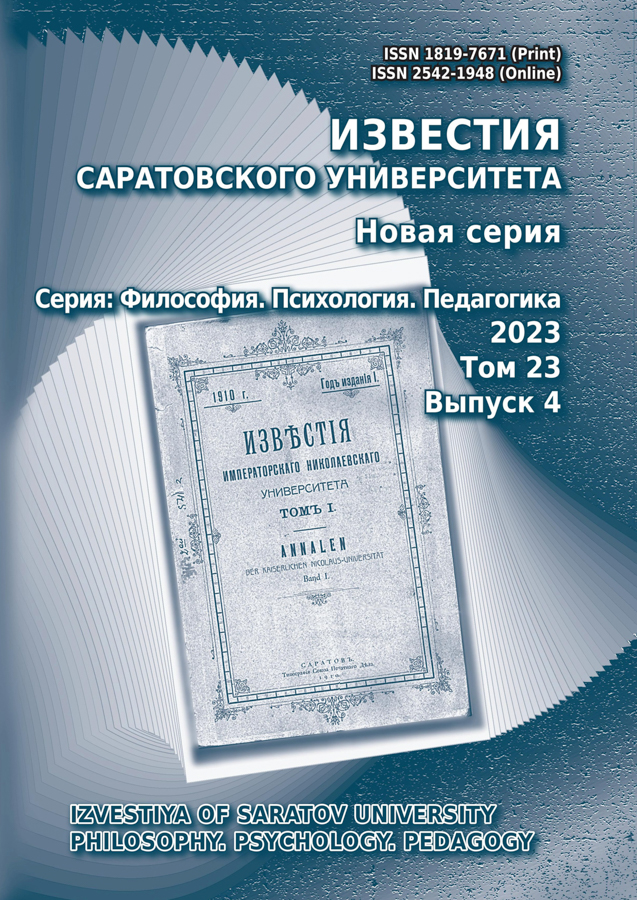Отношение к социальному взаимодействию с людьми маскулинного и фемининного типов: эмпирическое исследование
- Авторы: Титова О.И.1
-
Учреждения:
- Сибирский юридический институт МВД России
- Выпуск: Том 23, № 2 (2023)
- Страницы: 211-215
- Раздел: Статьи
- URL: https://journals.rcsi.science/1819-7671/article/view/250922
- DOI: https://doi.org/10.18500/1819-7671-2023-23-2-211-215
- EDN: https://elibrary.ru/LOVIES
- ID: 250922
Цитировать
Полный текст
Аннотация
Об авторах
Ольга Ивановна Титова
Сибирский юридический институт МВД РоссииРоссия, 660131, г. Красноярск, ул. Рокоссовского, д. 20
Список литературы
- Клецина И. С., Иоффе Е. В. Гендерные нормы как социально-психологический феномен. М. : Проспект, 2017. 143 с.
- Ломако О. М. Генеалогия гендера: социальнофилософские аспекты // Известия Саратовского университета. Новая серия. Серия: Философия. Психология. Педагогика. 2020. Т. 20, вып. 2. С. 134–137. https://doi.org/10.18500/1819-7671-2020-20-2-134-137
- Lee M., Kray L. J. A gender gap in managerial span of control: Implications for the gender pay gap // Organizational Behavior and Human Decision Processes. 2021. №167. С. 1–17. https://doi.org/10.1016/j.obhdp.2021.06.001
- Atwood S., Axt J. R. Assessing implicit attitudes about androgyny // Journal of Experimental Social Psychology. 2021. № 96. Р. 104162. https://doi.org/10.1016/j.jesp.2021.104162
- Wittlin N. M., Dovidio J. F., LaFrance M., Burke S. E. About face: Memory for transgender versus cisgender targets’ facial appearance // Journal of Experimental Social Psychology. 2018. №78. Р. 77–92. https://doi.org/10.1016/j.jesp.2018.04.009
- Ma D. S., Correll J., Wittenbrink B. The effects of category and physical features on stereotyping and evaluation // Journal of Experimental Social Psychology. 2018. №79. Р. 42–50. https://doi.org/10.1016/j.jesp.2018.06.008
- Lamer S. A., Weisbuch M. Men over women: The social transmission of gender stereotypes through spatial elevation // Journal of Experimental Social Psychology. 2019. № 84. Р. 103828. https://doi.org/10.1016/j.jesp.2019.103828
- Позняков В. П. Психологические отношения индивидуальных и групповых субъектов совместной экономической деятельности. М. : Издательство «Институт психологии РАН», 2018. 530 с.
- Балева М. В. Другой, похожий на меня: особенности внутригрупповой перцепции юношей и девушек с разной выраженностью негативных черт личности // Сибирский психологический журнал. 2019. № 74. С. 64–87. https://doi.org/10.17223/17267080/74/4
- Лопухова О. Г. Опросник «Маскулинность, феминность и гендерный тип личности» (российский аналог «Bem sex role inventory») // Вопросы психологии. 2013. № 1. С. 1–8.
Дополнительные файлы










